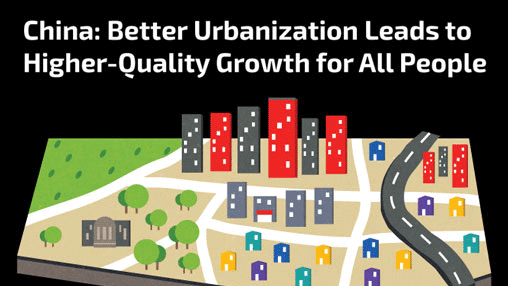China’s urbanization challenges
The report comes as China is seeking a new urbanization approach. In the last 30 years, cities, with abundant labor, cheap land and good infrastructure, played a key role in lifting half a billion people out of poverty. While China has avoided slums, squalor and other common ills of urbanization, strains are showing, such as inefficient urban sprawl, rising inequality and environmental damages.
The amount of urban construction land, the report says, rose 58 percent in a decade, to 41,805 square kilometers in 2011. About 90 percent of that new urban land was taken from farmers with low compensation, often no more than 20 percent of market prices, the report says. If the trend continues, China would need to find 34,000 square kilometers – about the size of the Netherlands – to accommodate urban growth in the next decade.
The rural land conversion worsens the wealth inequality in China, which is now near the top by international comparison. The top 10 percent of Chinese households owns 85 percent of the country’s total assets, along with 57 percent of total income. The wealth disparities also increase social tensions. In addition, the hukou registration system prevents migrants from receiving health care and other basic public services.
The low-density expansion, which leads to longer commutes, more private motorized trips and higher energy consumption, isn’t environmentally sustainable. The report says air pollution causes premature deaths, birth defects and other health problems that cost China as much as $300 billion a year. Water pollution, from sources such as domestic sewerage and livestock and poultry operations, is also a concern. About 57 percent of groundwater in 198 cities in 2012 was “bad” or “extremely bad,” according to government statistics. And the amount of municipal and industrial solid waste also more than doubled in seven years, to 2.6 billion tons in 2010.
Joint reports calls for comprehensive agenda led by land reform
To address those challenges, the report calls for comprehensive reforms in six areas, especially land management, environmental management and local finances. “Our close cooperation with the Development Research Center on this report has allowed us to combine our global knowledge on urbanization with an in-depth understanding of China’s policy challenge,” said Klaus Rohland, China country director for the World Bank. “The joint report will help guide China’s inexorable urbanization toward an outcome that improves the quality of life for China’s citizens.”
Key to the reform agenda is land, which determines how livable cities are, as well as the environmental impact and rural-urban income and wealth disparities, the report says. More efficient land use, along with a robust land registration system and higher compensation for rural residents, would likely lead to denser cities, while also shrinking the urban-rural gap. It also would reduce energy and car use in cities, and leave more land for agricultural production and environmental sustainability.
Already, some of China’s largest cities, including Beijing and Shanghai, are increasing their urban density, but more work is needed. If Guangzhou had the same density as Seoul, for example, 4.2 million more people could be accommodated, with shorter commuting distances.
In addition, denser urban planning would curb local governments’ reliance on land-based financing and limit the risk of unregulated borrowing. It would encourage market-driven land pricing and urban development, and help shift heavy industries to secondary and smaller cities. China also could integrate the market for rural and urban construction land, so local governments keep their functions in regulation, zoning and registration, but leave transactions to rural property rights holders and urban developers.
That transition would lead to lower government revenues from land transactions, forcing officials to look for new, stable revenues through measures such as property taxes and higher charges on water and other utilities. Environmental taxation and traffic-congestion charging could also raise revenues of up to 5 percent of global domestic product.
Those measures, along with tighter regulation on government borrowing, would make local governments more accountable. The report also suggests that China set up a municipal bond market to boost local financing. A level playing field, the report says, would discourage shadow banking, improve the quality of local government debt financing and support transparency and financial innovations.
More inclusive growth for migrants
The new revenues would help cities finance a minimum package of public services to migrants, increase the mobility of workers across China and increase their productivity and wages. In the medium term, with a subsidy from the central government to cities with the most number of migrants, reforms in basic public services and the public finance system could lead to a nationwide common service standard. Better access to housing finance would also help migrants buy urban property, reducing the growing rural-urban wealth gap, the report says.
Eventually, that would help China transition from the hukou household-registration system to one based on residency. Pension benefits should also become portable. Hukou and the residence system can operate in parallel, so migrants can retain their property rights in their hometowns.
One important element: local governments should be given incentives in their performance evaluation to enforce existing environmental laws and make sound decisions to foster an efficient, inclusive and sustainable urbanization process. Local governments can also improve their financial management and transparency with tools such as an expenditure framework and the disclosure of full financial accounts.
“As China’s urban population projected to rise to about one billion, or more than 70 percent of the country’s population, by 2030, the new report lays out a new model of urbanization that is focused on quality, not quantity,” said Bert Hofman, chief economist for the Bank’s East Asia and Pacific Region. “It could help launch China onto the path of sustainable urbanization.”


